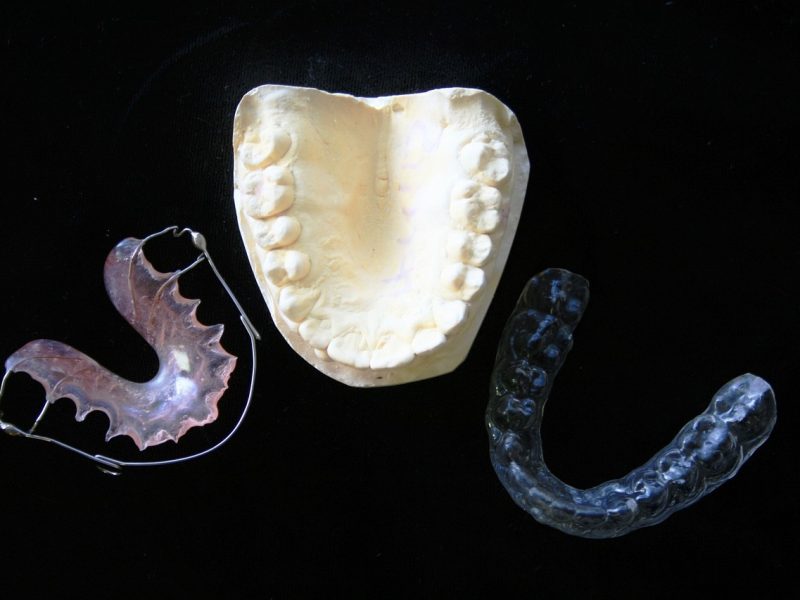While going for an orthodontic treatment for misaligned teeth or for smile designing, it is very important to know the role of retainers in orthodontic treatment. Retainers help to prevent the shifting of your teeth, as the teeth are always in constant movement in our mouth due to grinding, chewing, etc. Hence it has to be continually reminded of their position. Movement of teeth can happen any time before you realize it, so retainers are crucial to your success in orthodontic treatment.
Wear a retainer if you want to keep your teeth straight in correct position after removing your braces. This device keeps your teeth in proper alignment, which is why dentists recommend retainers after braces. A teeth retainer is a teeth aligner device you wear in your mouth over your teeth. It helps keep your teeth in their new, correct position after braces.
Even after orthodontic braces make your teeth straight, they aren’t steadfast in their new position. This doesn’t happen until the gums, bones, and muscles get used to the change. Everyday practices like chewing and grinding food apply forces to your teeth and can move them. Shifting teeth can also lead to malocclusion. This is when your upper and lower teeth don’t align with your mouth closed.
Another type of movement is a much slower, longer-lasting change that occurs over time. This is more than likely due to the gradual “up righting” movement of the front teeth on the lower jaw. This happens naturally with age, but this can cause teeth to crowd as they move closer to the tongue.
Undergoing orthodontic braces or clear aligner treatment will fix crooked teeth, but it won’t prevent these changes from occurring. The only guaranteed way to keep your teeth from shifting is by using a retainer to keep them in the proper position.
There are two types of retainers:
- Fixed retainers (also called permanent retainers)
These retainers stay on your teeth with a glue-like bonding agent. You can’t remove this type of retainer yourself. These are often used on the front, lower or upper teeth to keep them from coming apart or shifting over time.
- Removable retainers
You can remove this retainer and put it on again multiple times. Traditional (Hawley) retainers have a piece of wire attached to plastic (or acrylic). Clear retainers are also plastic but do not have any wires. Both are made to fit your teeth.
Roles of Oral Retainers:
The retainer snugs into your teeth and jaw perfectly. It is simply a plastic or metal appliance that keeps teeth aligned after a patient has completed orthodontic treatment with braces. These appliances are made from impression of teeth taken when the treatment is finished, and they apply the pressure and guidance needed to keep teeth from drifting back to their original positions. By using retainers, the teeth are literally being “retained” in their new position.
- After orthodontic treatment retainers keep teeth in their new corrected position hence preventing relapse of teeth mal alignment.
- Retainers prevent teeth from relapsing – or moving back to their former position – and ensure the long-term success of orthodontic treatment.
- By using the retainers, the teens can maintain the space required in their jaw to accommodate the wisdom teeth. Regular use of retainers ensures that the teeth do not crowd or shift due to a lack of space.
- If you got dental braces to fix gaps in the teeth, severely misaligned teeth, or overbite and deep bite, it would take a long time to stabilize. Therefore, holding the teeth in place even after the braces are removed is essential. Orthodontic retainers will help in doing that and ensure that the teeth are repositioned firmly in their new spaces till the mouth can adapt to the changes.
- If you have difficulty saying certain words due to the placement of teeth, a retainer can help form the sounds correctly. They can also correct a speech impediment called tongue thrust, where the tongue finds its way through the teeth when you talk. You can use a special retainer called a tongue cage to prevent this. It will further guide the mouth with the correct pronunciation.
Final thoughts:
Braces give you straight teeth, but a retainer makes them last. You put a lot of time, energy, and money into achieving that perfect smile through braces. You can continue it for years by following your dental provider’s recommendations for a teeth retainer. It’s an essential part of the teeth straightening process. If you have difficulty saying certain words due to the placement of teeth, a retainer can help in forming the sounds correctly.


